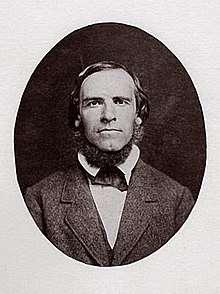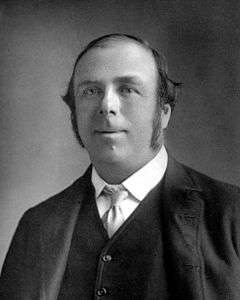Dunsink Observatory
The Dunsink Observatory is an astronomical observatory established in 1785 in the townland of Dunsink near the city of Dublin, Ireland.[1]

Its most famous director was William Rowan Hamilton, who, amongst other things, discovered quaternions, the first non-commutative algebra, while walking from the observatory to the city with his wife. He is also renowned for his Hamiltonian formulation of dynamics. In the late 20th century, the city encroached ever more on the observatory, which compromised the seeing. The telescope, no longer state of the art, was used mainly for public 'open nights'.
Dunsink observatory is currently part of the Dublin Institute for Advanced Studies (DIAS). It provides accommodation for visiting scientists and is also used for conferences and public outreach events. Public talks on astronomy and astrophysics are given regularly at the observatory by professional and amateur astronomers. Stargazing events are also held using the Grubb telescope.
History
The observatory was established by an endowment of £3,000 in the will of Francis Andrews, who was Provost of Trinity College Dublin at his death on 18 June 1774. The site was established on the south slope of a low hill in the townland of Dunsink, 84m above sea level.[2] The South Telescope or 12 inch Grubb, is a refracting (uses lens) telescope built by Thomas Grubb of Dublin, completed in 1868.[3] The achromatic lens, with an aperture of 11.75 inches, was donated by Sir James South in 1862, who had purchased the lens from Cauchoix of Paris 30 years earlier.[4] He had intended it for a large but troubled equatorial that came to fruition in the 1830s, but was dismantled around 1838.[5][6] (See also Great refractors)
The entry for the observatory in Thom's Directory (1850) gives the following account of the observatory,
::ASTRONOMICAL OBSERVATORY OF THE UNIVERSITY OF DUBLIN, DUNSINK
- Astronomer Royal, Sir William Rowan Hamilton, A.M., LL.D.
- Assistant Astronomer, Charles Thomson, esq.
This Observatory, endowed by Francis Andrews, esq., LL.D., Provost of Trinity College, and erected in 1785, was placed, by statute, in 1791, under the management of the "Royal Astronomer of Ireland," an appointment first filled by Dr. Henry Ussher, and subsequently by Dr. Brinkley, Bishop of Cloyne.
The Institution is amply furnished with astronomical instruments, and is open to all persons interested in astronomical science, on introduction to the resident Assistant. It is situated in Lat. 53° 23' 13" N., Long. 6° 20' 15" W.[1]
Dublin Mean Time, the official time in Ireland from 1880, was the mean solar time at Dunsink, just as Greenwich Mean Time (GMT) was the mean solar time at Greenwich Royal Observatory near London. In 1916, Ireland moved to GMT. In 1936, Trinity College stopped maintaining the observatory and rented out the land. Éamon de Valera, who had established the DIAS in 1940, added a School of Cosmic Physics to it in 1947, partly in order to revive the observatory, for which it was given responsibility.
Directors



The Andrews Professorship of Astronomy is a chair in astronomy in the University of Dublin (see List of professorships at the University of Dublin) and was associated with the director of Dunsink Observatory while the Observatory was part of Trinity College Dublin. It was founded in 1783 under the same endowment from Francis Andrews as the observatory, and regulated by a new Statute of Trinity College Dublin, which required the professor to "make regular observations of the heavenly bodies ... and of the sun, moon and planets". The chair was vacant after 1921, abolished in 1966 when the university's statutes were revised, and revived in 1984 as an honorary chair in the School of Mathematics[7] at Trinity College Dublin; current holder is Luciano Rezzolla. From 1793, under letters patent of King George III, the Andrews Professor held the title Royal Astronomer of Ireland. This title was also extinguished in 1966 and has not been revived.
| Dates | Name | Other titles | Notes |
|---|---|---|---|
| 1783–1790 | Rev. Henry Ussher | Andrews Professor of Astronomy | Died in office |
| 1792–1827 | Rev. John Brinkley | Andrews Professor of Astronomy, Royal Astronomer of Ireland (from 1793) | Appointed Bishop of Cloyne in 1826 |
| 1827–1865 | Sir William Rowan Hamilton | Andrews Professor of Astronomy, Royal Astronomer of Ireland | Appointed as a 21-year-old undergraduate. In addition to astronomy he worked on mathematics. He developed what is now known as Hamiltonian mechanics, and the system of quaternions, having discovered them in 1843. He died in office. |
| 1865–1874 | Franz Brünnow | Andrews Professor of Astronomy, Royal Astronomer of Ireland | retired due to failing health and eyesight |
| 1874–1892 | Sir Robert Stawell Ball | Andrews Professor of Astronomy, Royal Astronomer of Ireland | In 1892 became Lowndean Professor of Astronomy and Geometry at Cambridge |
| 1892–1897 | Arthur Alcock Rambaut | Andrews Professor of Astronomy, Royal Astronomer of Ireland | In 1897 became Radcliffe Observer at Oxford |
| 1897–1906 | Charles Jasper Joly | Andrews Professor of Astronomy, Royal Astronomer of Ireland | Died in office |
| 1906–1912 | Sir Edmund Taylor Whittaker | Andrews Professor of Astronomy, Royal Astronomer of Ireland | In 1911 became a professor at Edinburgh |
| 1912–1921 | Henry Crozier Keating Plummer | Andrews Professor of Astronomy, Royal Astronomer of Ireland | In 1921 became professor of mathematics at the Artillery College in Woolwich |
| 1921–1936 | Charles Martin | Acting Director. Died in office | |
| 1936–1947 | Vacant | No astronomical work was done | |
| 1947–1957 | Hermann Alexander Brück | Director of DIAS School of Cosmic Physics | In 1957 became Astronomer Royal for Scotland |
| 1958–1963 | Mervyn Archdall Ellison | Director of DIAS School of Cosmic Physics | Died in office |
| 1964–1992 | Patrick Arthur Wayman | Andrews Professor of Astronomy (from 1984, honorary), Director of DIAS School of Cosmic Physics | Retired, with a short gap before the next appointment. |
| 1994–2007 | Evert Meurs | Senior Professor DIAS | Retired |
| 2007–2018 | Luke Drury | Andrews Professor of Astronomy (honorary), Director of DIAS School of Cosmic Physics | Retired |
| 2018–present | Peter Gallagher | Senior Professor DIAS, Head of Astronomy and Astrophysics |
References
Sources
- "The Andrews Professor of Astronomy of Astronomy (1783)". School of Physics. Trinity College Dublin. Retrieved 26 September 2017.
- Wayman, P. A. (March 1986). "The Andrews' Professors of Astronomy and Dunsink Observatory, 1785–1985". Irish Astronomical Journal. 17 (3): 167–183. Bibcode:1986IrAJ...17..167W.
Citations
- Alexander Thom, Irish Almanac and Official Directory 7th ed., 1850 p. 258. Retrieved: 2011-02-22.
- Ordnance Survey Map Archived 2012-08-29 at the Wayback Machine. Select Wind Report for elevation. Retrieved: 2011-02-22.
- The South Telescope of Dunsink Observatory Authors: Wayman, P. A. Journal: Irish Astronomical Journal, vol. 8(8), p. 274 Bibliographic Code: 1968IrAJ....8..274W
- History of the Cauchoix objective
- "The Observatory of the Late Sir James South". Astronomical Register. 8: 196–199. 1870. Bibcode:1870AReg....8..196.
- Dictionary of National Biography, 1885-1900, Volume 53, "South, James", by Agnes Mary Clerke (WikiSource 2010)
- "School of Mathematics". maths.tcd.ie. Trinity College, Dublin.